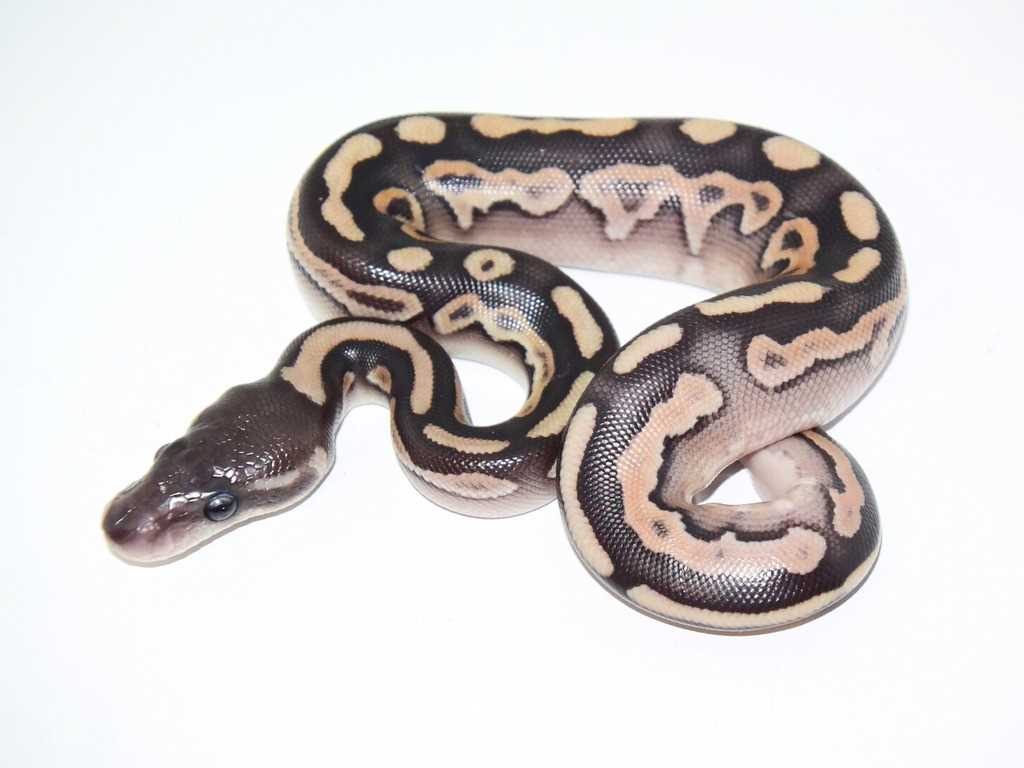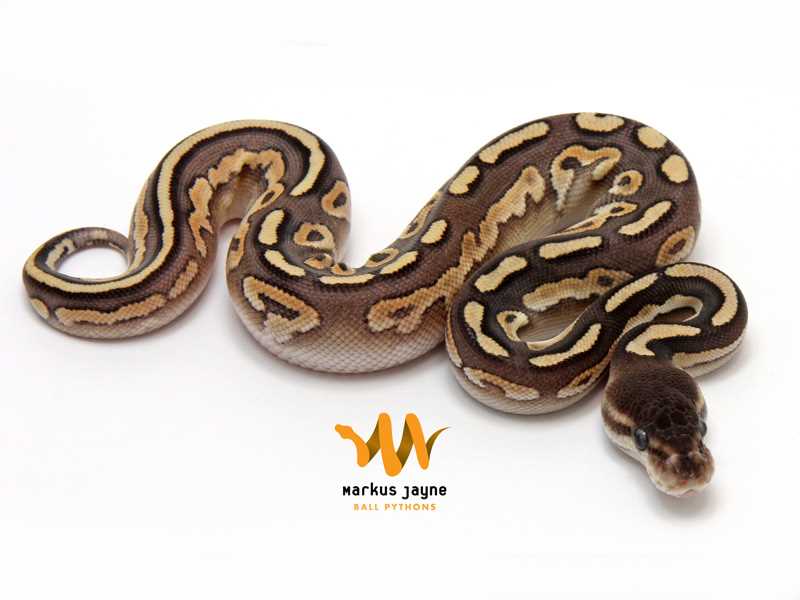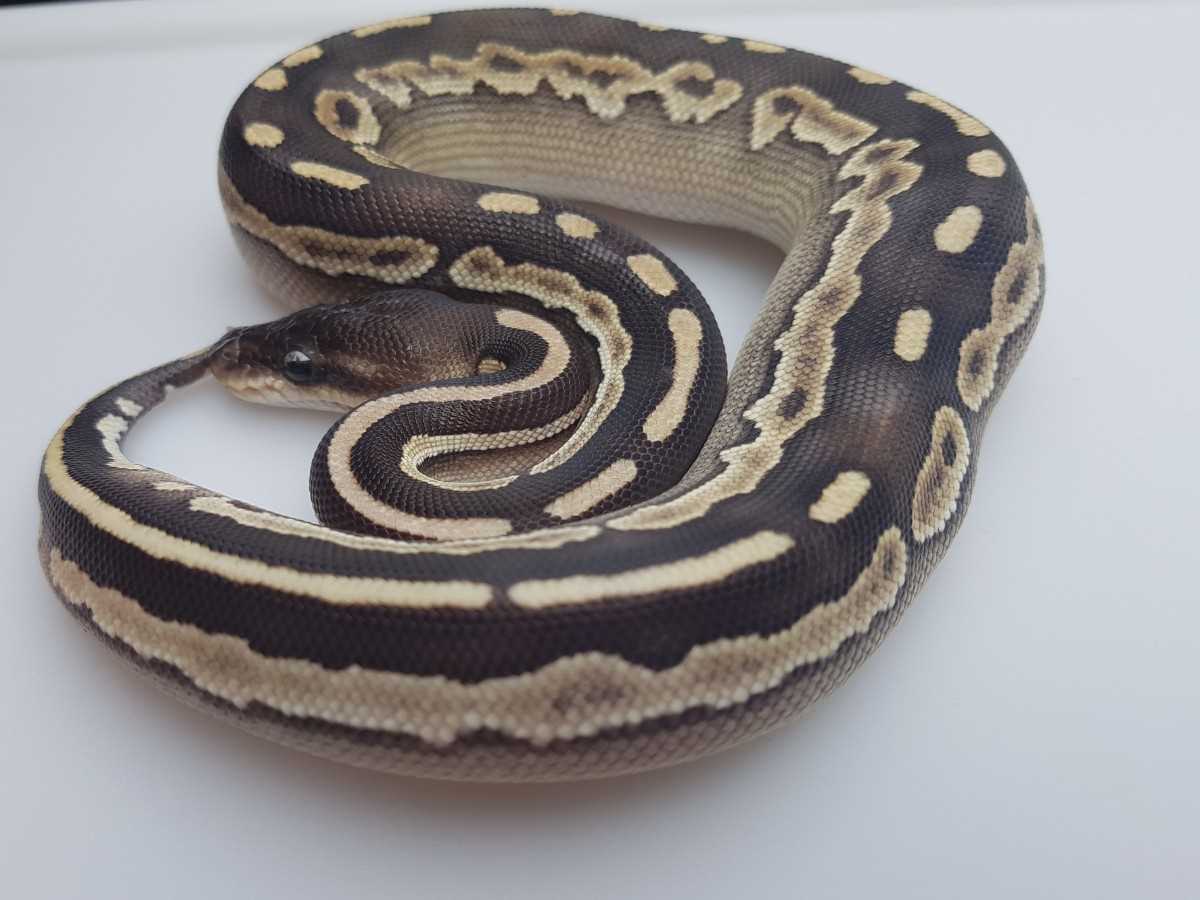The Cinnamon Mojave ball python is characterized by its mesmerizing caramel-colored base, which is overlaid with dark brown or black patterns. These intricate markings create a striking contrast against the snake’s overall appearance, making it a true showstopper. The warmth and richness of the colors make the Cinnamon Mojave an exceptionally eye-catching snake that stands out among the crowd.
Not only is the Cinnamon Mojave ball python visually stunning, but it also possesses a gentle and docile temperament. This makes it an excellent choice for both experienced reptile enthusiasts and beginners alike. With proper care and handling, these snakes can become quite tame and accustomed to human interaction, allowing for enjoyable and rewarding interactions with their owners.
What is a Cinnamon Mojave Ball Python?
A Cinnamon Mojave Ball Python is a unique and beautiful morph of the popular Ball Python species. It is highly sought after by snake enthusiasts and collectors for its stunning appearance and genetic traits. This python morph combines the Cinnamon and Mojave genes, resulting in a distinct coloration and pattern.
| Gene | Description |
|---|---|
| Cinnamon | The Cinnamon gene is responsible for the rich brown coloration and reduced pattern of the snake. It has a reddish-brown hue with darker chocolate brown markings. |
| Mojave | The Mojave gene further enhances the snake’s color, giving it a light brown to golden appearance. It also contributes to a reduced pattern, resulting in a unique and distinct look. |
The combination of these two genes creates a mesmerizing snake with a cinnamon-like coloration and a beautiful, reduced pattern. The Cinnamon Mojave Ball Python is highly sought after by breeders and snake enthusiasts alike, as it adds variety to breeding projects and collections.
Overall, the Cinnamon Mojave Ball Python is a stunning and unique morph that stands out among other ball python varieties. Its beautiful coloration and reduced pattern make it a prized addition to any snake collection.
Appearance
The Cinnamon Mojave Ball Python is a stunning morph that exhibits a unique combination of colors and patterns. Its name is derived from its cinnamon brown coloration, which is further enhanced by a light, almost silver, undertone. This combination gives the snake a distinct and beautiful appearance.
The pattern on the Cinnamon Mojave Ball Python is characterized by dark brown or black markings that are arranged in a symmetrical pattern along its body. These markings can vary in size and shape, creating a mesmerizing pattern that is unique to each individual snake.
The scales of the Cinnamon Mojave Ball Python are smooth and glossy, adding to its overall aesthetic appeal. Its eyes are typically a bright, vibrant shade of red, which contrasts beautifully against its cinnamon-colored scales.
Size
Adult Cinnamon Mojave Ball Pythons can reach a length of 3 to 5 feet, with females generally being larger than males. They have a slender and elongated body shape, with a well-defined head and neck.
Color Variation
While the Cinnamon Mojave Ball Python is primarily known for its cinnamon brown coloration, there can be variation in its appearance. Some individuals may exhibit a darker chocolate brown color, while others may have a lighter tan or beige hue. Additionally, the silver undertones can also vary in intensity, creating a range of unique color variations.
Genetics of Cinnamon Mojave Ball Python
The Cinnamon Mojave Ball Python is a beautiful morph that displays a combination of the Cinnamon and Mojave genes. This unique genetic combination results in a stunning snake with a distinct appearance and coloration.
The Mojave gene, on the other hand, is responsible for a reduction in melanin production, resulting in lighter pigmentation. It creates a lighter base color for the snake, which can range from shades of brown to pale cream. When combined with the Cinnamon gene, it enhances the overall coloration and creates a visually striking pattern.
The genetics of the Cinnamon Mojave Ball Python follow a co-dominant inheritance pattern. This means that when a snake carries both the Cinnamon and Mojave genes, it will display the phenotype of the Cinnamon Mojave morph. When bred with another snake carrying either of these genes, the offspring can inherit a variety of genetic combinations, resulting in different morphs and colorations.
The Cinnamon Mojave Ball Python is highly sought after by snake enthusiasts and breeders due to its unique coloration and genetics. It is an excellent addition to any snake collection, and its distinct appearance is sure to captivate anyone who sees it.
Temperament
The Cinnamon Mojave Ball Python is known for its calm and docile temperament, making it a popular choice among snake enthusiasts. These snakes are generally easy to handle and are not prone to aggressive behavior.
They are not known to be particularly vocal, but they may hiss or strike if they feel threatened. However, with proper handling and care, they can become quite tame and friendly.
When handling your Cinnamon Mojave Ball Python, it’s essential to approach them calmly and confidently. Always support their entire body and avoid sudden movements or loud noises that may startle them.
With regular and gentle handling, these snakes can become accustomed to human interaction and can even develop a bond with their owners. They are generally non-aggressive and can make excellent pets for both beginner and experienced snake keepers.
Housing and Care Requirements for Mojave Ball Python

Proper housing and care are crucial for the well-being of a Mojave Ball Python. Here are some important considerations:
Enclosure

- A Mojave Ball Python should be housed in an enclosure that is secure and escape-proof.
- The size of the enclosure should be appropriate for the snake’s size, allowing for movement and hiding.
- A minimum enclosure size for an adult Mojave Ball Python is 36 inches long, 18 inches wide, and 12 inches tall.
- Make sure the enclosure has a secure and well-ventilated lid to prevent the snake from escaping.
- Provide hiding spots, such as caves or small boxes, to make the snake feel secure.
Temperature and Humidity
- Maintain a temperature gradient in the enclosure, with a warm side and a cool side.
- The warm side should be around 88-90 degrees Fahrenheit, while the cool side should be around 78-80 degrees Fahrenheit.
- Use a heat source, such as an under-tank heating pad or a heat lamp, to provide the necessary warmth.
- Monitor the humidity levels in the enclosure, aiming for a range of 50-60%.
- Mist the enclosure regularly to maintain the required humidity.
Substrate
- Choose a suitable substrate for the enclosure, such as aspen shavings or coconut husk.
- Avoid substrates that can cause respiratory issues, such as cedar or pine.
- The substrate should be kept clean and replaced regularly to prevent bacterial growth.
Feeding
- Feed your Mojave Ball Python appropriately sized prey items.
- Avoid feeding live prey, as it can pose a threat to the snake.
- Offer frozen-thawed rodents, thawed in warm water, to ensure the safety of your snake.
- Feed juvenile snakes every 5-7 days, while adult snakes can be fed every 1-2 weeks.
Handling
- Handle your Mojave Ball Python gently and with care.
- Support the snake’s body when handling to prevent injury.
- Avoid handling after feeding or during shedding, as it can cause stress to the snake.
- Wash your hands before and after handling to prevent the spread of bacteria.
By following these housing and care requirements, you can ensure that your Mojave Ball Python thrives in its environment and remains healthy and happy.
Feeding and Diet
The feeding and diet of a Ball Python, especially the Cinnamon Mojave morph, is an essential aspect to keep in mind for their overall health and well-being. These snakes are carnivores, meaning they primarily eat other animals.
Feeding should occur once every one to two weeks for adult snakes, while younger snakes may require more frequent feedings. It’s crucial to maintain a consistent feeding schedule to ensure proper nutrition and prevent any weight-related health issues.
When feeding your Cinnamon Mojave Ball Python, it’s recommended to use a separate enclosure or feeding container to avoid any confusion between feeding time and regular handling. This helps prevent any accidental bites or associating your hand with food, which can lead to unwanted aggression.
It’s essential to offer only appropriately sized prey to avoid any regurgitation or digestion problems. A general rule of thumb is to feed prey that is no wider than the snake’s widest body section to avoid any digestive issues. Additionally, be cautious not to overfeed your snake as this can lead to obesity and other health complications.
Dietary Supplements
Cinnamon Mojave Ball Pythons, like other ball python morphs, may benefit from additional dietary supplements. These supplements are usually in the form of calcium and multi-vitamin powders, which can be dusted onto the prey before feeding. This helps ensure that your snake receives all the necessary vitamins and minerals for optimum health.
Consulting with a reptile veterinarian or an experienced breeder can provide valuable guidance on the specific dietary supplements suitable for your snake.
Water Needs
Proper hydration is crucial for the health and well-being of your Cinnamon Mojave Ball Python. Provide a shallow water dish large enough for the snake to soak in if desired, as well as to drink from. Ensure that the water is clean and easily accessible at all times.
Mist the enclosure or provide a humid hide to maintain the appropriate humidity levels for your snake, which helps with shedding and overall health.
Health and Common Diseases
Common Snake Diseases
Just like any other pet, ball pythons can be susceptible to certain diseases. Some common snake diseases include:
- Respiratory Infections: These can occur due to poor husbandry or a bacterial or viral infection. Symptoms may include respiratory distress, wheezing, and nasal discharge.
- Parasites: External parasites like mites can infest ball pythons and cause itching, scales, and overall discomfort. Internal parasites, such as worms, can also affect snakes and lead to weight loss and digestive issues.
Preventive Care

- Regular Vet Check-ups: Schedule regular check-ups with a reptile veterinarian who can assess your snake’s overall health and detect any potential issues early on.
- Quarantine: If you have multiple snakes, it’s essential to quarantine any new additions for a period of time to prevent the spread of diseases.
- Clean Habitat: Maintain a clean and hygienic habitat for your snake, including regular spot cleaning and deep cleaning as needed.
- Regular Feeding and Nutrition: Provide a balanced diet for your snake, with the appropriate prey items and supplements to meet their nutritional needs.
- Monitor Behavior and Appearance: Keep an eye on your snake’s behavior and appearance, looking out for any signs of illness or distress. If you notice anything unusual, consult a reptile veterinarian.
By following these preventive care measures and being vigilant about your snake’s health, you can help minimize the risk of common diseases and ensure a happy and thriving Cinnamon Mojave Ball Python.
Breeding and Genetics of Cinnamon Mojave Ball Pythons
Genetic Inheritance
The Cinnamon Mojave Ball Python is a result of combining two distinct genetic morphs: Cinnamon and Mojave. Each morph carries its own set of genetic traits, which are inherited and may be expressed in offspring.
When a Cinnamon morph is bred with a Mojave morph, the resulting offspring can inherit different combinations of these genetic traits. This can lead to a wide range of morphs and appearances, creating further opportunities for breeders to produce unique and desirable snakes.
Mating and Breeding
When selecting breeding pairs, it is crucial to consider the specific genetic traits and desired morphs. Breeding two Cinnamon Mojave Ball Pythons together will produce a clutch of offspring that will inherit a combination of their genetic traits. This can result in a variety of morphs, including Cinnamon Mojave, Cinnamon, Mojave, and others.
Clutch Size and Incubation
Once the female Cinnamon Mojave Ball Python has been successfully bred, she will lay a clutch of eggs. The clutch size can vary but typically ranges from 4 to 8 eggs. The eggs should then be carefully removed from the enclosure and placed in an incubator set to the appropriate temperature and humidity levels.
Continued Breeding and Selective Pairing
Successful breeding of Cinnamon Mojave Ball Pythons opens up opportunities for further selective pairing and breeding projects. Breeders can introduce new genetic morphs or refine existing ones by selecting specific individuals with desirable traits for future pairings.
| Genetic Trait | Resulting Offspring |
|---|---|
| Cinnamon + Mojave | Cinnamon Mojave |
| Cinnamon + Cinnamon Mojave | Cinnamon, Cinnamon Mojave |
| Mojave + Cinnamon Mojave | Mojave, Cinnamon Mojave |

I’m Lena Adams—a product of an unconventional upbringing in the African wilderness. My father, a daring explorer of African wildlife, sparked my fascination with reptiles, a passion that intertwined with the tragic loss of my mother during an expedition, leaving an indelible mark on my life. Driven to understand the creatures that captivated my parents, I embarked on my journey, sharing insights about reptiles, frogs, and lizards on my website. Through my explorations and conservation efforts, I honour my family’s legacy while seeking connections—to the creatures, nature, and the mother whose presence I yearn to understand.
